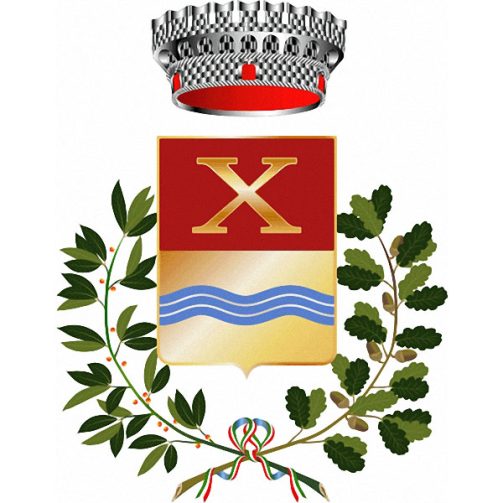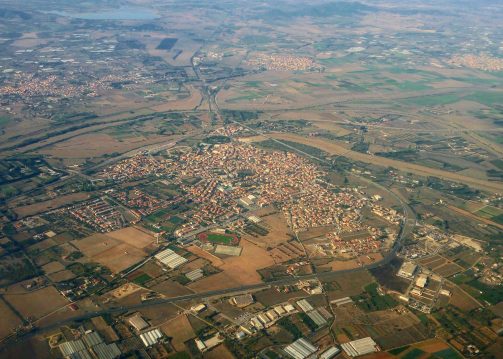West of Cagliari, after Assemini, on the edge of state road 130 leading to Iglesias, along a bend in riu Mannu, lies Decimomannu, a large center of more than eight thousand inhabitants. It has always been a strategic outpost; it is no coincidence that in Roman times the Caralis-Sulcis (Sant’Antioco) road passed through Decimum. The toponym is also of clear Roman origin, meaning ‘ten miles from Cagliari.’ The first settlements in its territory are Neolithic. A Nuragic village and a necropolis where Punic bronze coins were found testify to later periods. According to historian Casula, near Decimo, the 215 B.C. battle between the Romans and the Sardinian-Punics took place during the Second Punic War. It was resolved with an overwhelming Roman victory, whose rule left several legacies, the most notable being the bridge over the riu Mannu, at Bingia Manna, which can be dated to between the end of the 1st century BC and the beginning of the 1st century AD. Built of squared limestone ashlars, it is presumed to have consisted of thirteen arches. Today you will see three, plus the remains of other bases. Next to it are the ruins of a stone wall, a flood embankment. According to Canon Spano, “the bridge at Decimo was much more beautiful than the one at Porto Torres,” with those at Sant’Antioco and Gavoi the only Sardinians still standing. Remains of another minor bridge are in the su Meriagu area. Other Roman traces are those of the aqueduct, evidence of the first public water supply. In the Middle Ages the town went to the giudicato of Cagliari: many judges resided there. From the Aragonese period is the sarcophagus of Violante Carroz, daughter of James, viceroy of Sardinia, kept in the village cemetery.
The most important religious building is the parish church of St. Anthony Abbot in Catalan-Gothic style, dating from the 16th century. Three chapels on each side are grafted into the single nave, on the right cross-vaulted, on the left barrel-vaulted. Through a majestic archway you access the star-vaulted chancel. Of note are the Gothic capitals and the baptismal font. The facade is embellished with a Gothic portal, rose window and, since 1922, a triangular tympanum. To its left stands the tall bell tower.
Saint Arega (Greek saint) has been known and venerated for 1700 years in Decimo and throughout Sardinia. According to tradition, the tombstone, believed to be authentic (4th or 5th century), holds her relic found in 1633. She died a martyr at the age of 20, possibly during the persecutions of Diocletian and Maximian (304 AD). There are records of a church dedicated to her in 1500, built on an older one (possibly 13th century). In 1777 a new church with polychrome marble altar and pulpit was built at the southwest entrance to Decimo. It underwent several alterations and a complete restoration. The church remains secluded throughout the year: it comes alive for a week in early October during the festival in its honor that draws thousands of people from all over the Island.
Source : https://www.sardegnaturismo.it/it/esplora/decimomannu



